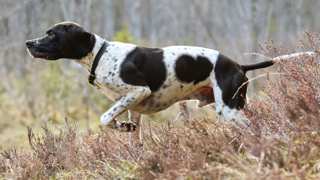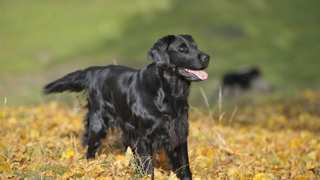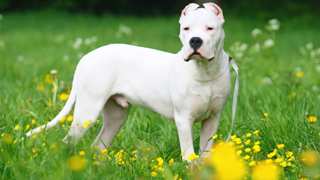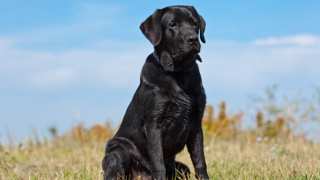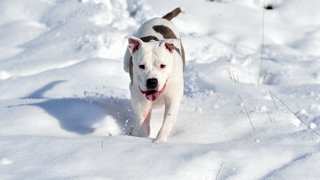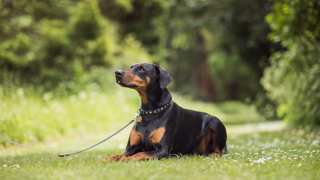As a lively, energetic, athletic breed, Curly-Coated Retriever exercise requirements are fairly extensive. Because Curlies are used to spending hours at a time in the fields on hunts, they'll need a variety of activities that both condition them physically (walking, jogging, fetch) and challenge them mentally (hunting, canine sports). They make excellent bicycling companions as well.
The typical adult CCR, depending on its age and overall activity level, will need about an hour of proper exercise per day--which you can achieve with a couple of walks, jogs, or bike rides and a period of play. You can start exercising your CCR puppy when it's three months old by taking it on short (5- to 7-minute) leashed walks, then you can increase the walks' length and frequency as the puppy grows. And these early walks are a good opportunity to start teaching the pup obedience, through leash training: make sure the puppy walks beside or behind you on the leash, instead of being allowed to lead or "tug" on it. This, in the puppy's mind, establishes you as the leader, and should make training easier as the puppy enters its long maturation period.
A few precautions to consider when exercising your Curly-Coated Retriever: first, puppies younger than nine months old shouldn't participate in activities that include a lot of jumping, running on hard surfaces, or navigating of stairs, as doing so can injure their still-developing joints and bones. And regardless of age, all CCRs will need to be leashed when in public. These dogs have exceptionally high prey drives, so they'll instinctively chase other animals--birds, squirrels, cats, even small dogs--if given the chance; a leash will help you control your CCR when it sees or smells an interesting critter. Even when exercising in your own yard, the area will need to be securely fenced to keep the dog from running off after potential prey. Also, this breed can be susceptible to bloat, an often-fatal condition caused by a dog's stomach filling with air when it "wolfs" its food; the condition is most prevalent when a dog exercises just before or after eating. It's best, then, not to exercise your CCR for an hour before or two hours after eating. And finally: Curlies form deep bonds with their human family members, and will respond better to exercises in which one of their people also participates--so exercises you do together are much better.
Safeguards aside, it's important to exercise your CCR every single day. Though affectionate, these dogs are lively and exuberant--and without consistent activity they'll become frustrated, disobedient, destructive, and thoroughly unhappy in general. Regular exercise will be great for both the dog's and your own peace of mind! A few exercise ideas:
- Walking/Jogging/Bicycling: Two 20-minute walks (or 15-minute jogs or bike rides) per day is a good target
- Fetch/Frisbee: These dogs will chase a ball, stick, or Frisbee for hours
- Swimming: CCRs are excellent swimmers; take the dog into the pool or lake with you when it's still a puppy
- Tug-of-War: Good indoor, rainy-day activity; use a rope or old towel
- Canine Sports: CCRs can excel at obedience, agility, and field trials, flyball, and other events
- Hunting: Puts these dogs in their natural element
- Hiking: Excellent bonding activity; bonus if you can find a remote area where the dog can be off-leash
When indoors, give your CCR access to balls or chew-toys so it can burn excess energy. Also establish a regular exercise schedule, such as walks in the morning and evening and a play period in the afternoon.

